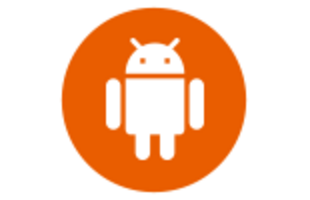General Naviki App questions and answers
Which geographical area does the Naviki app cover?
The Naviki apps are available world-wide. You can immediately use the comprehensive and free Naviki basic package for all countries including all cities and regions.
I am asked to permit access to contact data. Why?
With this permission it is possible to select a contact from your address book as a starting point or destination. This way you do not have to type in or search the respective address, you just select the desired contact. Moreover, if you find an address with a phone number as part of a point of interest inside the Naviki map, you may call this number immediately from the Naviki app.
Do I need a continuous internet connection to use the Naviki app?
To calculate routes and to see new map sections, an internet connection is required. This is because Naviki does not calculate the routing result on the smartphone. The app requests the routing via our routing server and therefore an internet connection is needed.
With the our Extra 'Offline maps' you don't need an internet connection to see the map. However, if you use offline maps you still need a short internet connection to calculate a new route.
For recording trips you don't need an internet connection.
What about power supply on route and how long will my battery last?
Naviki is optimised for low electric power consumption. Depending on your smartphone and on your usage behaviour the app runs between three and eight hours while using turn-by-turn instructions. You can enhance this time slot e.g. by the aid of conventional powerpacks available in electronic shops.
The app seems to be unable to access the GPS signal. What can I do?
Presumably, the GPS function of your smartphone has been turned off or your general settings don't allow Naviki access to the GPS information. In your settings you may allow Naviki to access GPS data.
Are the different extras available separately or do I have to buy all extras at once?
You can purchase Naviki extras one by one according to your interests. It's up to you which extras you get and which ones you miss out for a start. That way you configure Naviki to be your individually tailored bicycle app.
I'm going to buy a new smartphone. Will already purchased extras work on the new device as well?
Your purchased extras will be available on your new smartphone without any costs as soon as you are connected with the respective Google or Apple account. However, if you change from one operating system to another (e.g. from iOS to Android or vice versa), this is not possible.
Does the extra 'Offline Maps' include free map updates?
Naviki's offline maps are updated on a regular base (at least once in three months). You can access these updates in the app by tapping the button 'update offline maps'. Our long term support for offline maps lasts three years.
General Naviki questions and answers
For routing Naviki provides the options everyday, leisure, racing bike, mountain bike, S-pedelec and shorter route. What does that mean?
Everyday. Naviki everyday routing gives you the cycle tracks for your daily activities. Whenever possible it prefers: minor roads, bicycle lanes, rather short and straight routes, easy accessible and solid surfaces.
Leisure. Naviki leisure routing provides cycle routes for tourism and leisure activities. Whenever possible it prefers: officially signposted cycle tracks, easy accessible and solid surfaces, minor roads, a nice natural environment.
Racing bike. Naviki racing bike routing provides what racers want! Whenever possible it prefers: sealed, smooth surfaces, tracks allowing high-speed cycling, minor roads, a nice natural environment
Mountain bike. Naviki mountain bike routing provides what mountain bikers need! Whenever possible it prefers: offroad routes, unsealed surfaces, single trails, distinguished and signposted MTB routes, forest and country tracks.
S-pedelec. Tailor made routes for fast e-bikes up to 30 mph on roads allowing power-driven vehicles. Beyond that, whenever possible this option prefers: minor roads with low volume of traffic, tracks allowing high-speed cycling, a nice natural environment.
Shorter route. Naviki's shorter route is the one you may prefer if your first priority is reaching your destination quickly. It consequently prefers a direct route to your target location (all other characteristics depend on that).
Does Naviki calculate round trips?
Yes, it's very easy to calculate round trips with the Naviki app and on the Naviki website. Just enter your starting point and the length of the trip you would like to cycle. Then Naviki provides many proposals for accordant round trips you can easily click through and choose from to start cycling immediately.
Who can see my routes?
You decide who can see your routes:
Anyone: Your route can be found by anyone via the search.
People with the link: Your route does not appear in the search, but you can share it yourself with others.
Only me: Only you can see the route.
And this is how you decide who can see your routes:
For single routes:
- On the web, click on your username in the top right corner and select "My Routes". Move the mouse over the route and click on the pencil.
- In the app, select the route in "My Naviki". Switch to "Details" and tap on the stylus.
For all routes:
- On the web, click on your user name in the top right corner, then on "Settings" and at the bottom on "Edit".
- In the app, select "More", tap "My Profile" and scroll to "Privacy".
How can I share a route?
Access the route from My Naviki and tap share at the top. Select how you want to share the route. Via More... you'll find more options.
How much empty memory do I need for the offline maps??
This depends on how many and which map tiles you download to your smartphone. For tiles of sparsely populated areas, about 5 MB per tile can be enough. In larger cities, more information increases the amount of memory required. For example, you will need approx. 77 MB for Cologne. In addition, you need about 200 MB of free memory for the base map and the map styles.
What is the relation between Naviki and OpenStreetMap (OSM)?
OpenStreetMap (OSM) collects free editable geographic data, which can be used for creating maps. Naviki fully supports the OSM project. Naviki applies OSM map data to decide about the suitability of paths and roads for cycling. You are allowed and permitted by licensing rights to process Naviki data on OSM. By this option Naviki helps contributing to the further improvement of OSM. You can report suspected errors in the map directly on the OSM main page. Changes made to OSM are added to Naviki shortly afterwards. Naviki does not treat or interpret OSM data in a uniform manner, but gives preference to routes that are especially attractive for cycling. In doing so, Naviki distinguishes between the different needs of everyday, mointainbike, racing, leisure and e-bike cyclists.
All Naviki FAQs
Further answers via chat
In the Naviki Chat you get immediate answers to most questions. Start chat now ...
If you have a question regarding the Impulse app, please click here.


